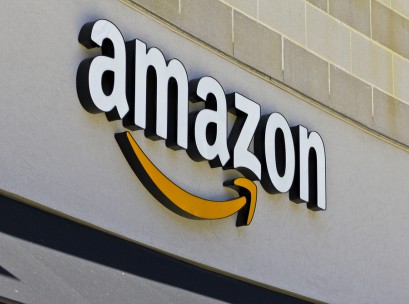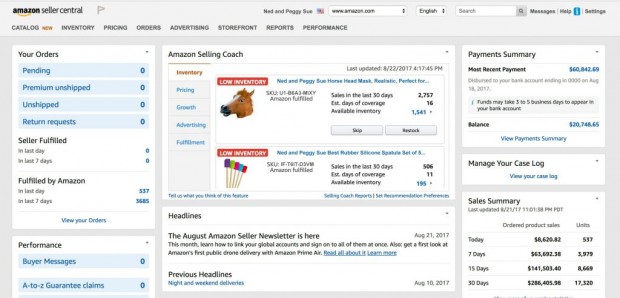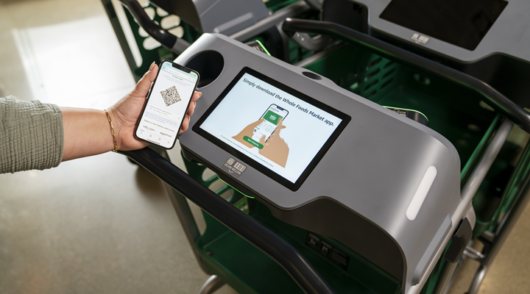 Almost one month after Amazon confirmed the location of its first fulfilment centre in Australia, the e-commerce giant remains tight-lipped about the date and scope of its launch of Marketplace Down Under.
Almost one month after Amazon confirmed the location of its first fulfilment centre in Australia, the e-commerce giant remains tight-lipped about the date and scope of its launch of Marketplace Down Under.
But sources within the retail sector have told Internet Retailing that a late-September, early-October launch is very likely. They have also said Fulfilment by Amazon (FBA) will not be part of the initial launch.
“It will more than likely not be a full-service that will be launching. They might not have all their categories. They might not have all the FBA service,” said Ray Ridgeway, managing director of World First, a company that helps sellers on Amazon, Ebay and other global marketplaces transfer funds overseas.
FBA allows sellers to outsource their entire logistics process – warehousing, fulfilment, returns and customer service – to Amazon for a fee. While the exact fee depends on the weight of the item, among other factors, sellers using FBA can expect to pay somewhere between 25-30 per cent of the sale to Amazon. This includes the 15 per cent fee Amazon charges to sell on Marketplace.
Most people in the industry agree that FBA is the key to Amazon’s success, underpinning its delivery offering and differentiating it from competitors like Ebay. (The alternative is FBM, or Fulfilment by Merchant.)
Qing Yuan Zhou, venture partner at Goat Consulting, a US-based Amazon consulting firm, previously told Internet Retailing that her company almost always recommends FBA to sellers, since they are more likely to get a favourable page ranking and a shortcut for customers to add their products to cart. As a result, Zhou said, sellers may see sales go up by at least 20 per cent.
But according to sources who have been given access to a beta version of ‘Seller Central’, Amazon’s seller portal, FBA is not currently supported in Australia. This is unsurprising given the fact that Amazon has only recently secured its first local warehouse and the general consensus that Marketplace will launch in time for Christmas trading.
“In a normal world, September is your usual cut-off for planning for Christmas. You’ve got to get your stuff in order to make sure you’ve got everything ready for Christmas by end of September. You have to have your stock in there,” Ridgeway said.
In addition, some sources say Amazon typically launches about eight weeks after it gives sellers access to ‘Seller Central’, which lines up with a late-September, early-October launch date.
Meanwhile, advertisements for the company’s audio book service, Audible, have ramped up on television in recent weeks, and today it reached a deal with Myer to sell Kindle devices in stores.
Amazon declined to answer questions from Internet Retailing about the launch date of Marketplace and status of FBA in Australia.

The first wave
Sources say the company has hand-picked retailers and brands that have their own stock and self-fulfil to be among the first wave to launch on Marketplace, which will help ensure a good customer experience from day one, even without FBA.
This includes some Australian retailers and brands that already sell through Amazon’s global marketplaces, as well as companies that are not on Amazon, but sell through other marketplaces, like Ebay, according to sources.
Ruslan Kogan has stated publicly that Kogan.com plans to sell private label products on Amazon in Australia, as it does on Ebay and Trade Me in New Zealand. And Beacon Lighting, which already sells on Amazon in the US and Europe, is reportedly considering setting up shop on Amazon in Australia.
In addition, sister publication Inside Retail Weekly has reported that PVH Brands Australia, the local licensee for Clavin Klein, Van Heusen and Tommy Hilfiger is undertaking negotiations with Amazon to bring its products to Marketplace at launch.
According to Ridgeway, Amazon will focus on onboarding Australia-based online businesses first, followed by bricks-and-mortar businesses, followed by foreign sellers on the company’s global marketplaces.
Ridgeway said the delayed launch of FBA gives Australian retailers “the opportunity to catch up and sort their game plan out”.
“People have to really start thinking about what the customer wants, getting the customer service element back… To be honest with you, the Australian market has been deprived of healthy competition for far too long. They haven’t been thinking ahead,” he said.
The downsides
While Ridgeway and many others in the industry are encouraging retailers to “embrace” Amazon, they are also frank about the downsides.
“Amazon look after the customer, and at the end of the day, they probably don’t treat their sellers like customers. If you’re caught out and someone reports you, they’ll stop your website and you have to prove yourself innocent,” Ridgeway said.
Indeed, at a recent event for potential sellers hosted by World First in Melbourne, Amazon sellers Darren and Michelle Beecham cited one example when a customer in the US reported a problem with their store to Amazon during Black Friday, the biggest sales event of the year.
Amazon promptly suspended their sales, and by the time the Beechams refuted the claim, they had missed out on tens of thousands of dollars in sales. They told audience that this is just a part of doing business and that the positives outweigh the negatives.
Another area of real concern for sellers is the possibility of competing directly with Amazon. The company is notorious for identifying best-selling products on Marketplace and launching its own private label product in that space at a lower price.
“There are two things Amazon typically does. They nudge their sellers to keep trying products, so they can see which products are selling extremely well, and they analyse reviews to see why a product is selling well. They can then truly understand what’s going on and attribute what about the product is driving the sale,” said Mihir Kittur, co-founder and CEO of Ugam Solutions, an India-based analytics firm, which recently opened an office in Australia.
“A lot of other retailers don’t have the sophistication of data to develop the product or messaging. Amazon is very good at doing that and doing it to the largest retailers in the US.”
Kittur acknowledged that sellers have few good options when it comes to competing with Amazon.
“If you do it, you’re in bad shape, but if you don’t, you’re still in bad shape. The good news is sellers on Amazon get the same insights, so they also benefit. The question retailers have to ask is how they can create the right relationship and not be taken advantage of,” he said.
This story first appeared on sister site, Internet Retailing.
Access exclusive analysis, locked news and reports with Inside Retail Weekly. Subscribe today and get our premium print publication delivered to your door every week.





